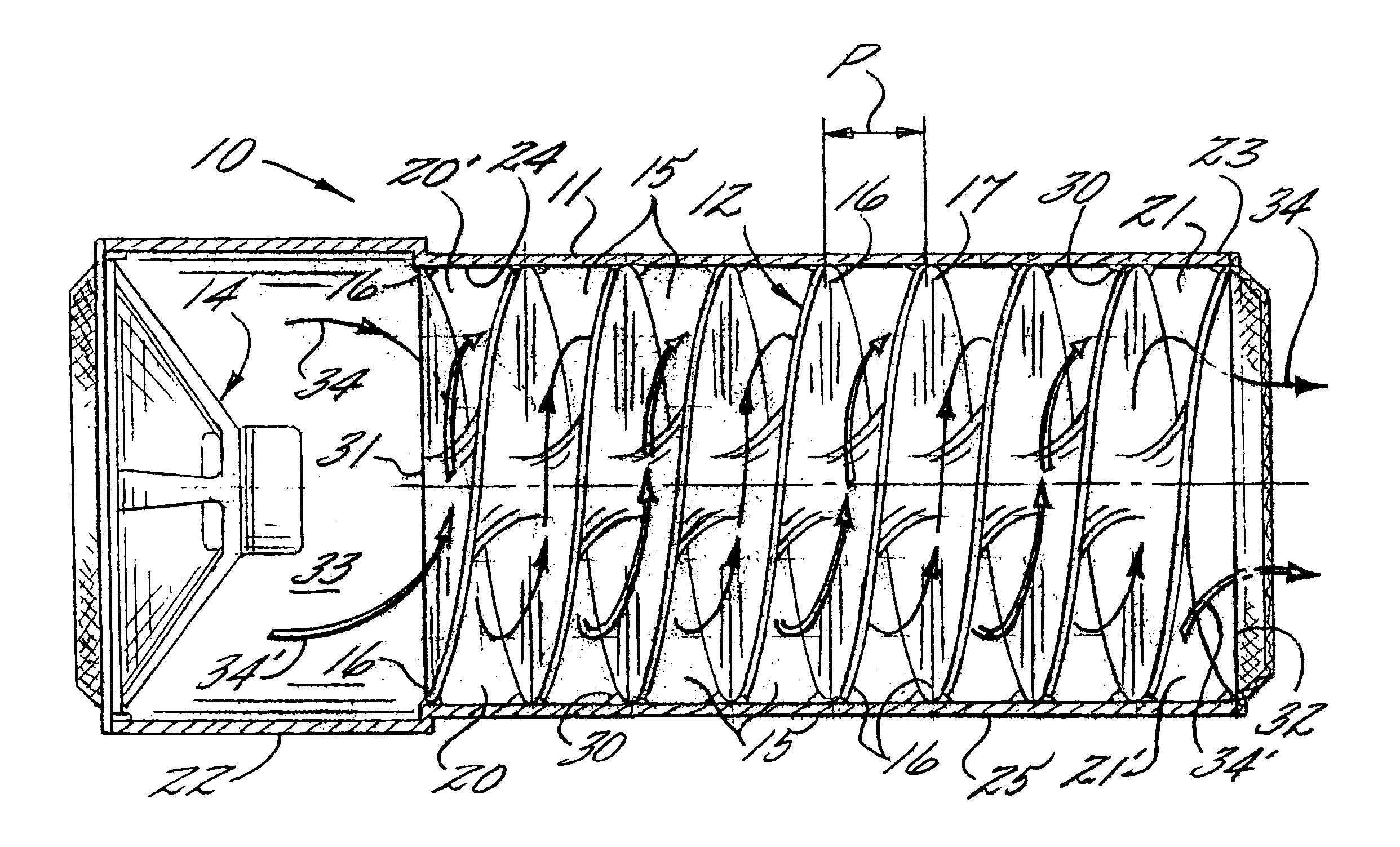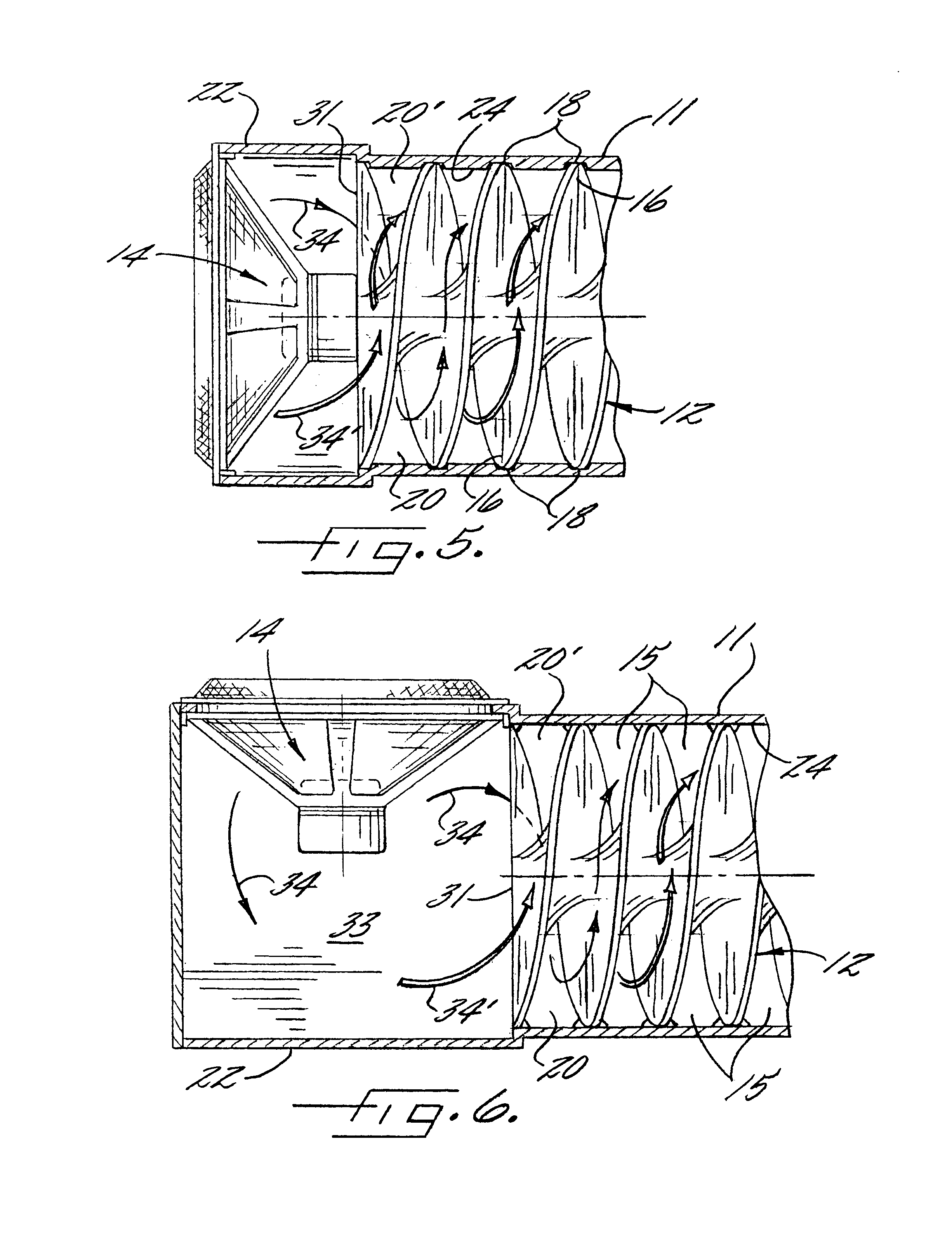Apparatus for increasing the quality of sound from an acoustic source
a technology of acoustic source and enclosure, which is applied in the direction of transducer details, electric apparatus casings/cabinets/drawers, instruments, etc., can solve the problems of reducing and reducing the sound quality of the enclosure. , to achieve the effect of maximizing the total area of the sound passag
- Summary
- Abstract
- Description
- Claims
- Application Information
AI Technical Summary
Benefits of technology
Problems solved by technology
Method used
Image
Examples
Embodiment Construction
[0023]The present invention will now be described more fully hereinafter with reference to the accompanying drawings, in which a preferred embodiment of the invention is shown. This invention may, however, be embodied in many different forms and should not be construed as limited to the embodiments set forth herein. Rather, these embodiments are provided so that this disclosure will be thorough and complete, and will fully convey the scope of the invention to those skilled in the art. Like numbers refer to like elements throughout.
[0024]The term “wave”, and in particular “acoustic wave”, will refer to a disturbance traveling through a medium, for example, a sound wave traveling through an air mass. Hence, the terms wave, acoustic wave, and sound wave may be used interchangeably.
[0025]It will be understood that as used herein the term the term “acoustic path” refers to a passage that directs acoustic waves.
[0026]The term “damping” as used herein refers to the reduction of movement of...
PUM
 Login to View More
Login to View More Abstract
Description
Claims
Application Information
 Login to View More
Login to View More - R&D
- Intellectual Property
- Life Sciences
- Materials
- Tech Scout
- Unparalleled Data Quality
- Higher Quality Content
- 60% Fewer Hallucinations
Browse by: Latest US Patents, China's latest patents, Technical Efficacy Thesaurus, Application Domain, Technology Topic, Popular Technical Reports.
© 2025 PatSnap. All rights reserved.Legal|Privacy policy|Modern Slavery Act Transparency Statement|Sitemap|About US| Contact US: help@patsnap.com



